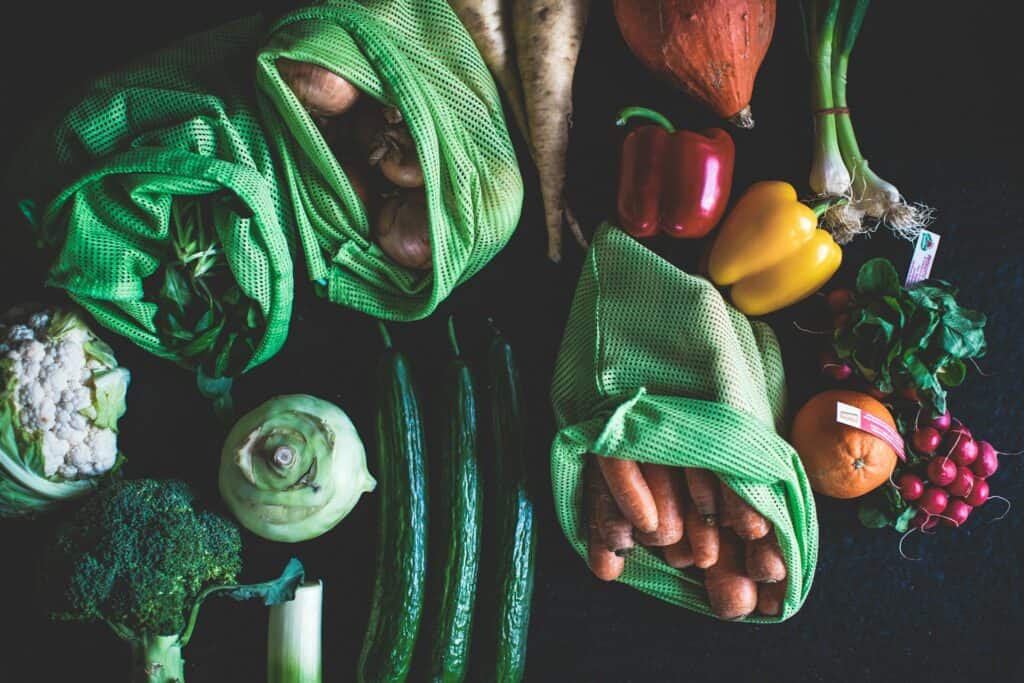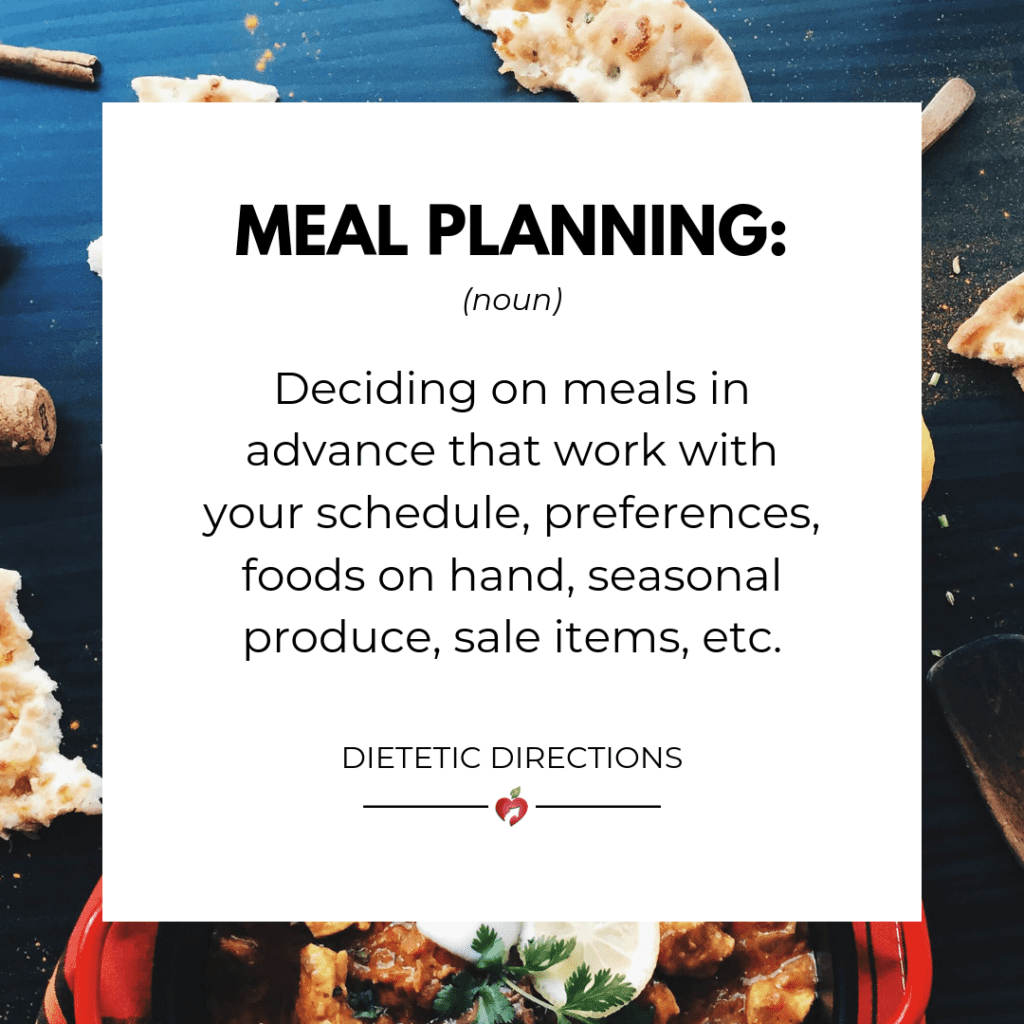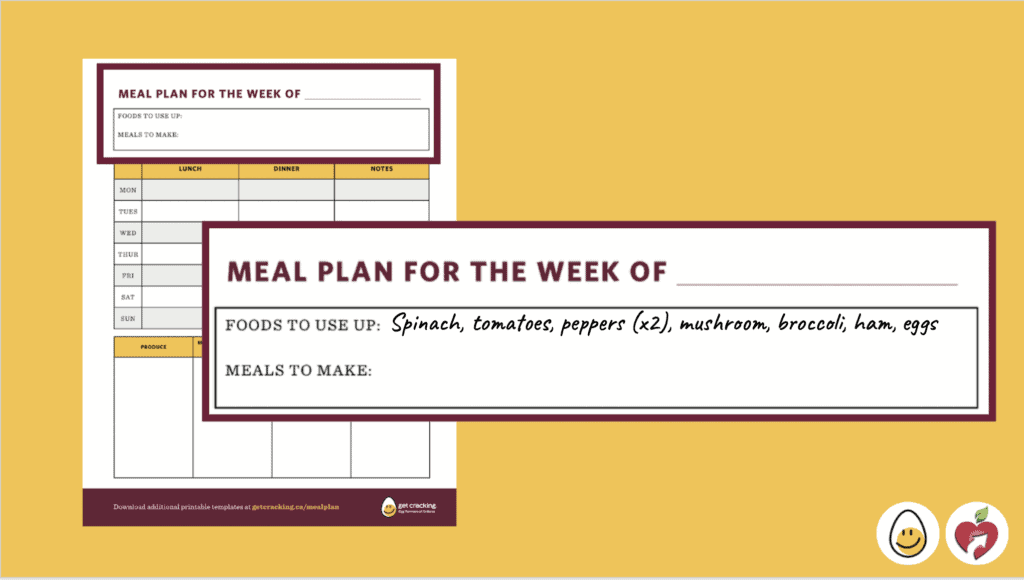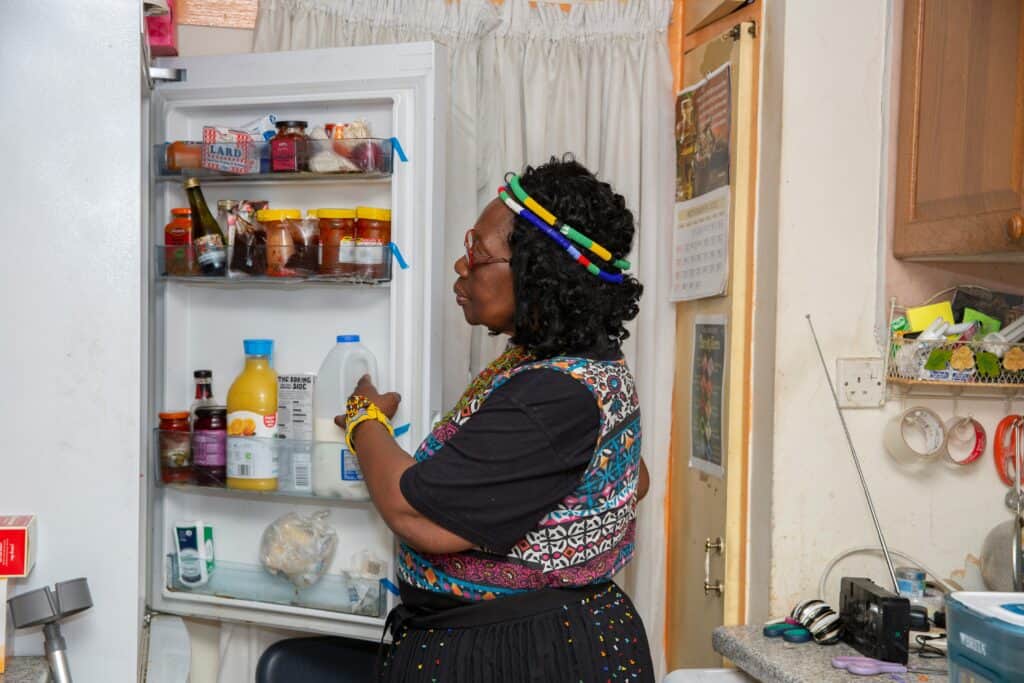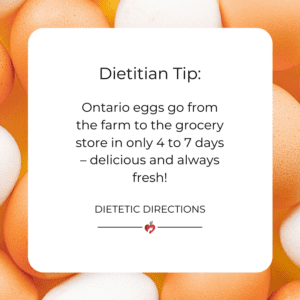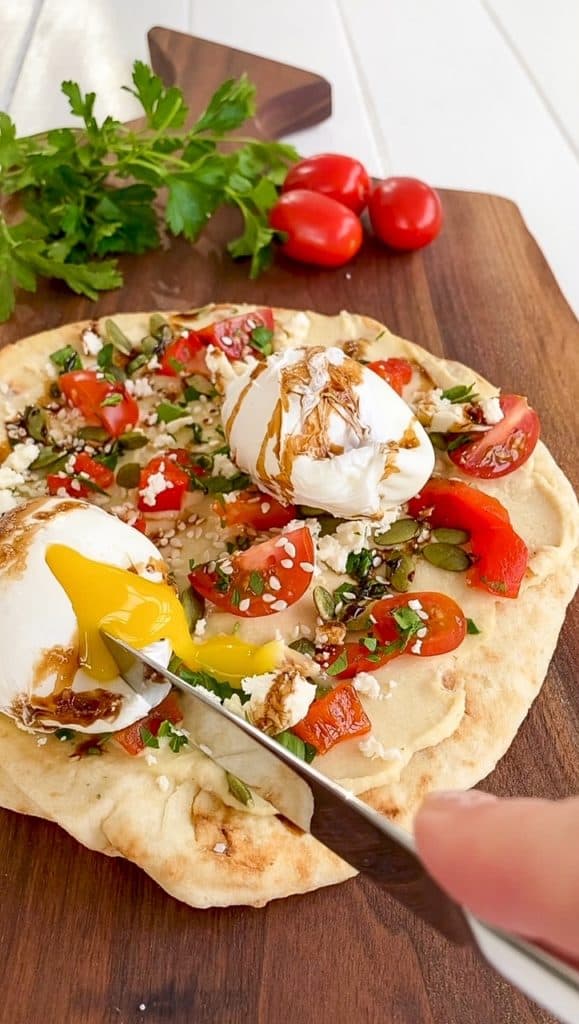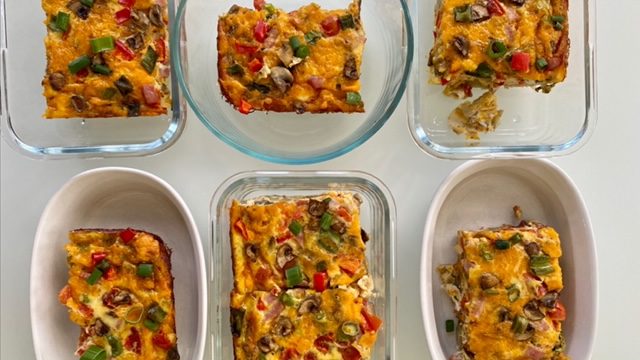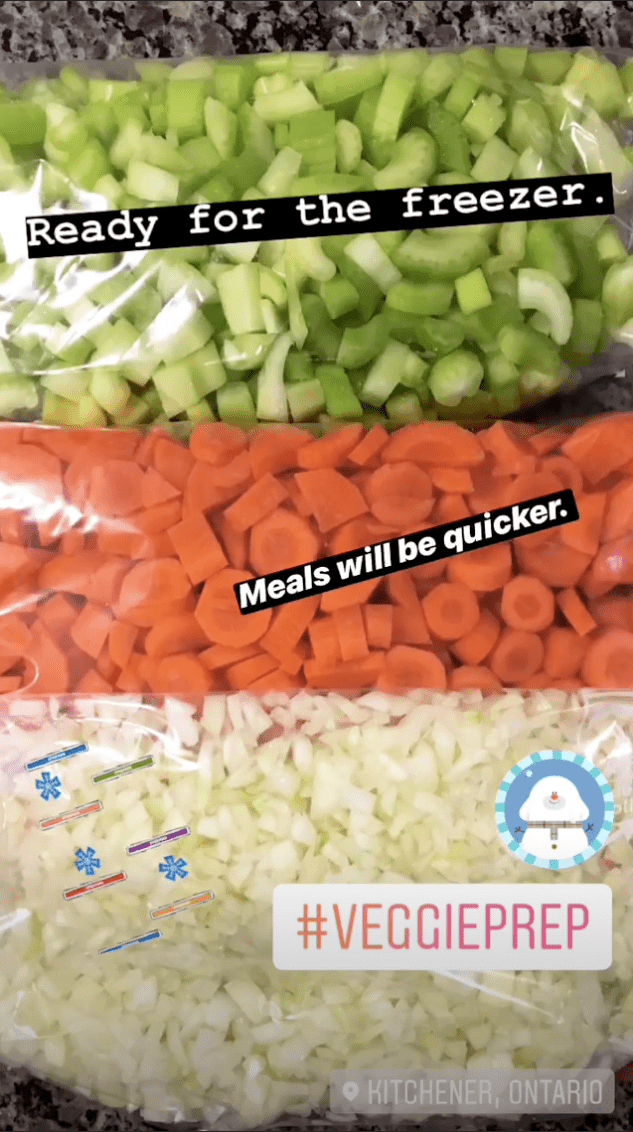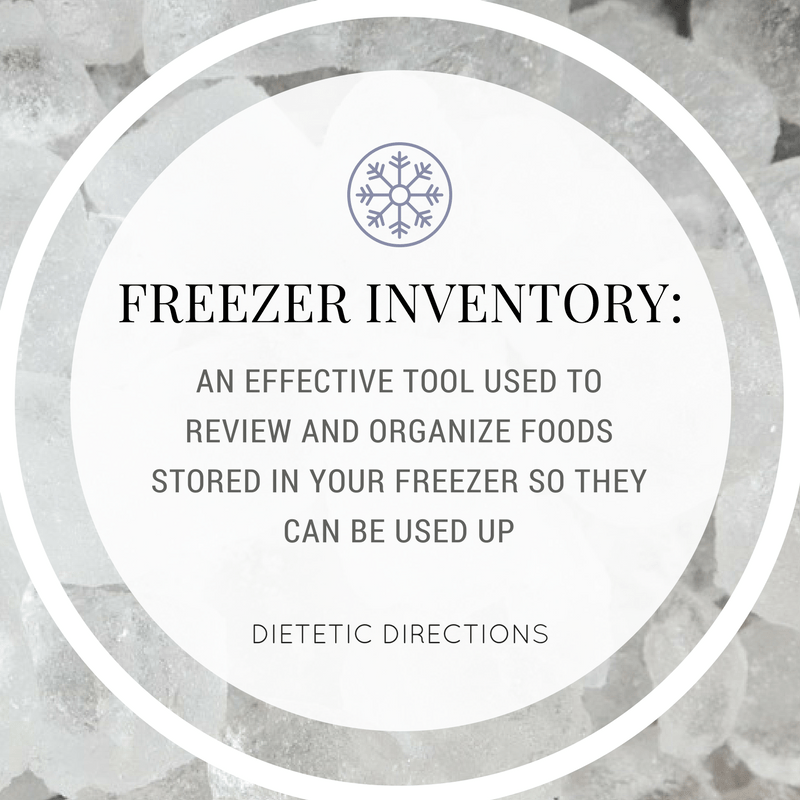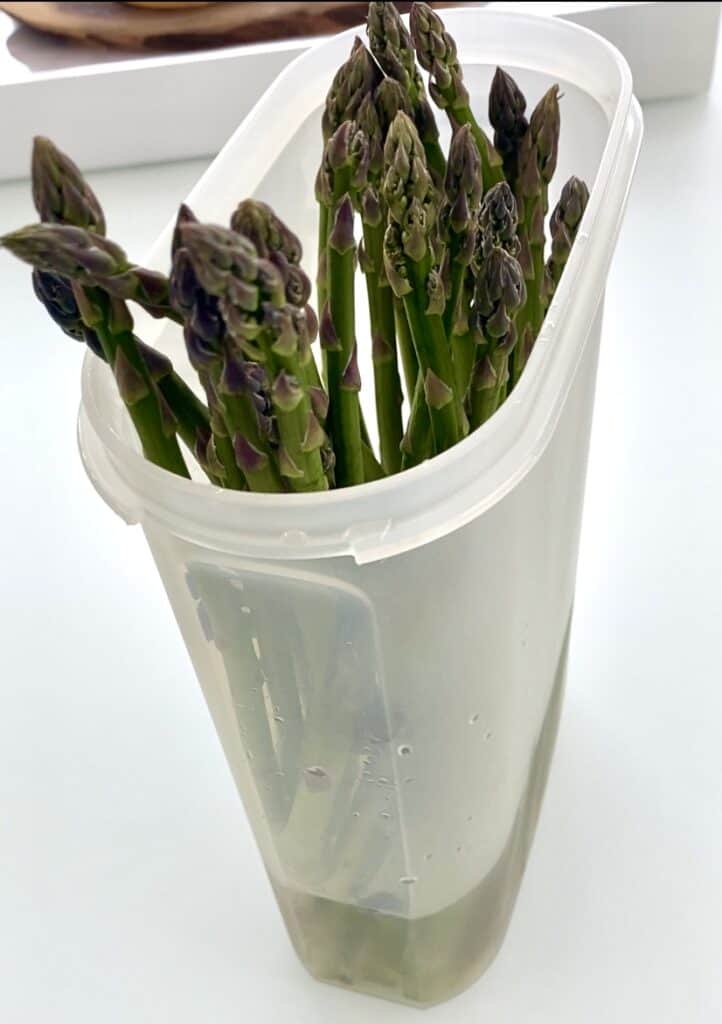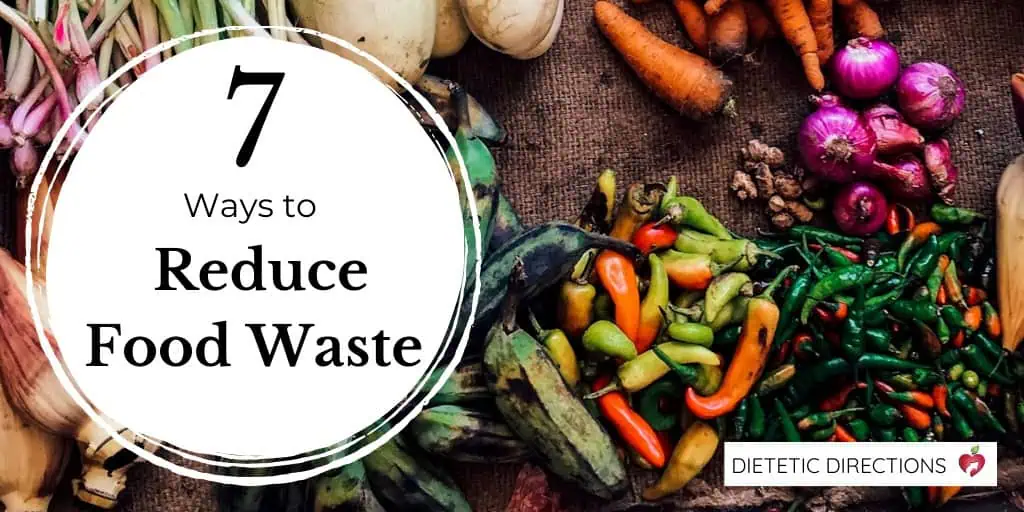
7 Ways to Reduce Food Waste
Reducing food waste is a powerful way to save money and the environment! In honour of Earth Day, I’ll share my dietitian-approved strategies to lessen this all-too-common household problem of wastefulness. After all, Canadian families throw away about 10% of the groceries purchased. What a shame. Therefore, let’s say goodbye to wilted spinach, moldy mushrooms and spotted apples. We can also make a difference to fight climate change.
This post was sponsored by the Egg Farmers of Ontario; as always, all opinions are genuine.
How Much Food Are We Wasting?
The average Canadian household wastes over $35 a week (~ $1,800/year) on good, uneaten food. Similarly, 60% of this food waste is avoidable, meaning that food simply goes bad before we have a chance to use it. However, unavoidable food waste includes things like egg shells, coffee grinds and bones.
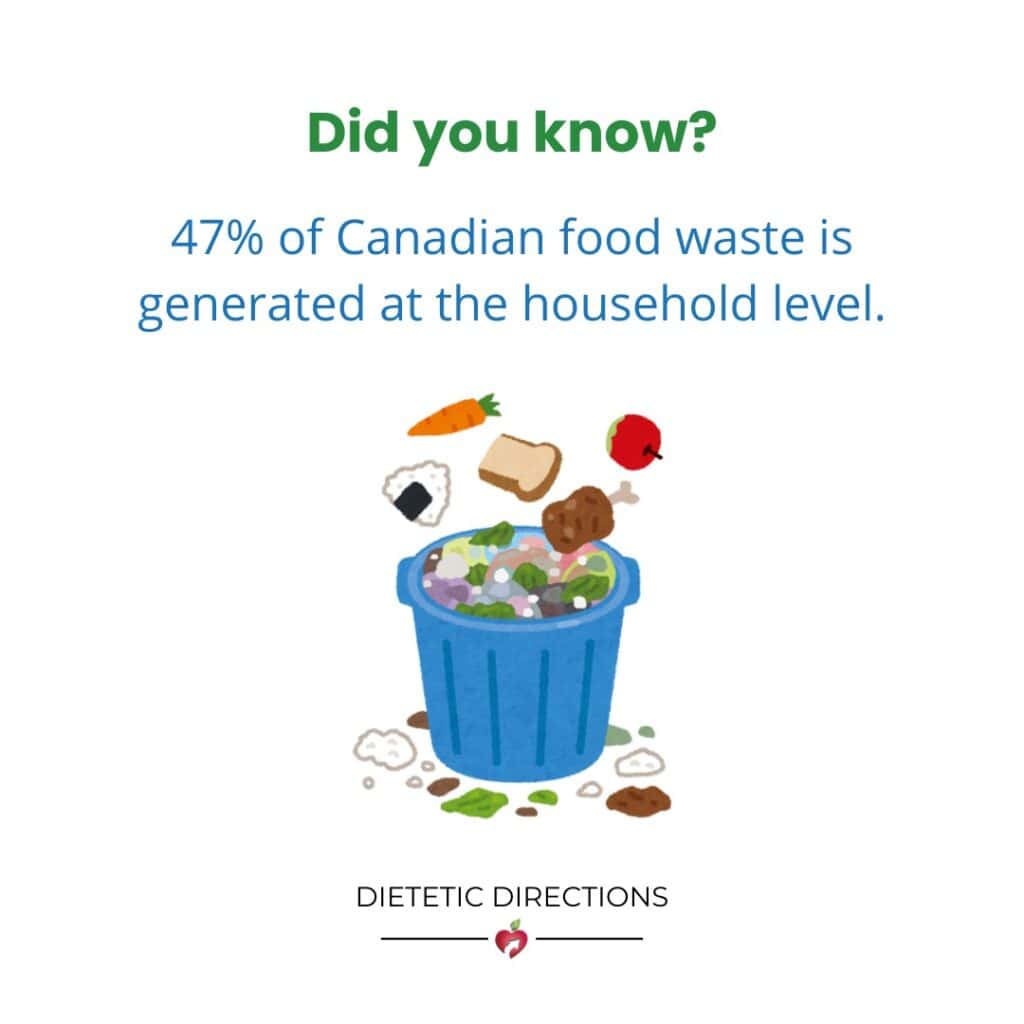
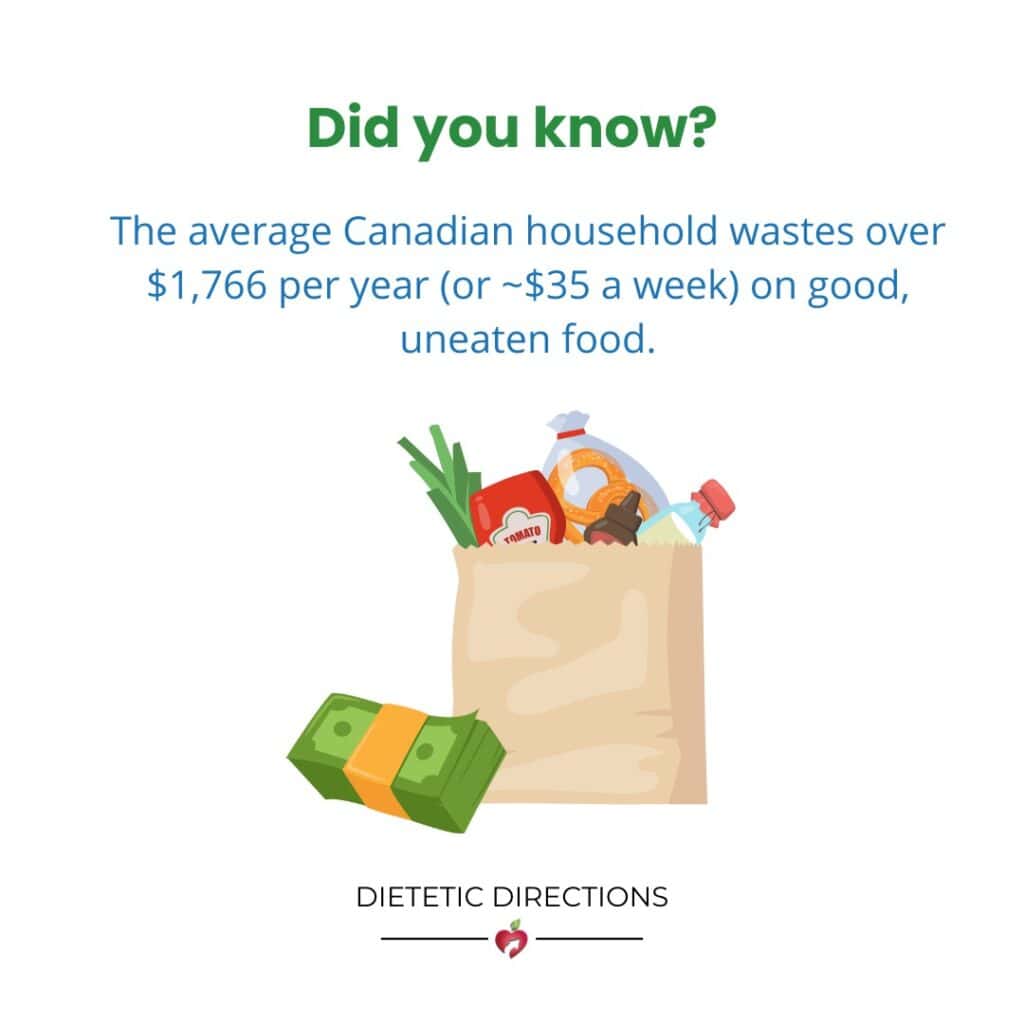
Does Food Waste Impact the Environment?
Yes, food waste impacts the environment. If food goes in the landfill and rots, it produces methane – a greenhouse gas that’s 86 times stronger than carbon dioxide. Additionally, when we waste food, we also waste all the energy and water it takes to grow, harvest, transport and package these foods.
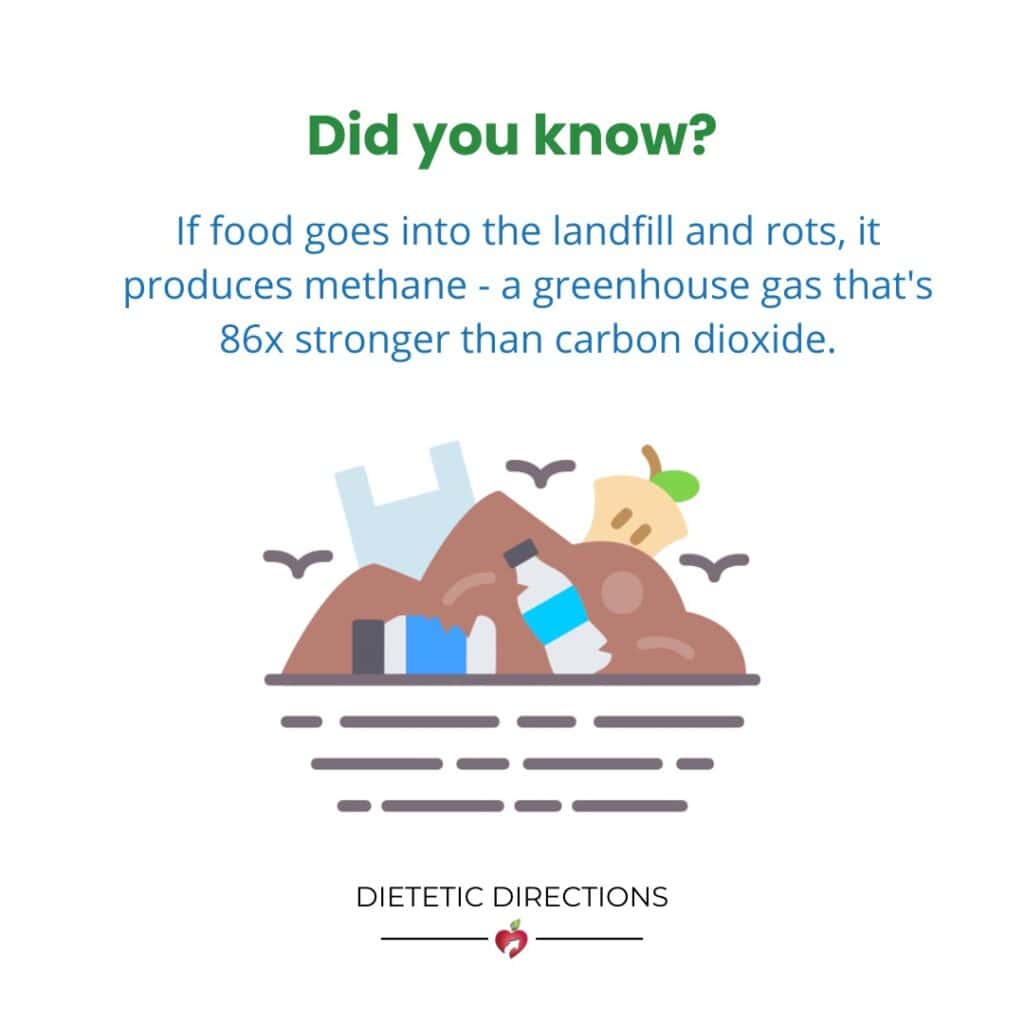
Top 7 Ways to Reduce Food Waste
1. Meal Plan Before Grocery Shopping
The first strategy (and arguably the most powerful) to reduce household food waste is to start meal planning! After all, food waste is largely preventable and proper planning helps use up existing foods FIRST so we buy only what we need. As a Dietitian, I love meal planning and recommend it to clients to help them save money and time and improve family nutrition. However, less often do we think about how meal planning helps the environment too.
Meal Planning takes a concerted effort. This is why we have created Meal Plan Like a Pro a FREE, comprehensive, 28-page book that I wrote with tons of dietitian-approved, meal inspirations, budget-saving tips and step-by-step templates to get those nutritious meals on the table, based on your schedule and favourite recipes. Download your copy for FREE or, Ontario residents can get a booklet (available in English or French) at Getcracking.ca/mealplan. Check out our past blog on Meal Planning Template for a step-by-step breakdown of how to start meal planning.
Grab FREE Meal Plan Like a Pro! Its 28 pages include meal ideas, dietitian tips and templates to help you reduce food waste, stress and save!
2. Take a Fridge Inventory to Reduce Food Waste:
The next powerful food tip to lessen food waste (also part of Meal Planning) is to take a weekly food inventory of all your perishables. Therefore, at the end of each week, open your fridge and write down all existing foods on your Meal Planning Template (FREE here). You’ll see this in the top section under the title, “Foods To Use Up.”
Write perishables under the “Foods To Use Up” in the Meal Planning Template to reduce waste.
Why Do a Fridge Inventory?
- Allows you to plan meals using existing perishables FIRST.
- These foods act as forefront meal inspiration. For example, leftover spinach, mushrooms and eggs, why not make an omelette?
- Helps you to buy only what you need based on your weekly planned meals.
- Consequently, you have less food waste as well as less mealtime stress (since you know what’s planned) AND you save money too!
Tracking what you have in the fridge helps you to buy only what you need and avoid food waste!
3. Plan a “Fridge-Cleaner” Meal
My next dietitian tip for reducing food waste is to plan a weekly (or bi-weekly) “Fridge-Cleaner” meal. This is a completely flexible dinner where you can toss in those perishable ingredients. Quite literally, think of these recipes as ways to “clean your fridge” of stray or forgotten veggies. Interestingly, many of my favourite “Fridge-Cleaner” recipes involve eggs, which are a dietitian kitchen staple and a nutrition powerhouse with only 70 calories, 6 grams of high-quality protein and 14 essential nutrients per egg.
Additionally, I love eggs because they are an economical protein at only about $0.25 an egg. This is especially relevant in our market of rising food prices. Similarly, using Meal Themes is a strategy to reduce dinner decisions. Why not plan a quiche, frittata or stir-fry night at the beginning of the week to efficiently toss in those leftover perishables and enjoy a crowd-pleasing, nutritious meal?
Clear out your fridge and cut back on food waste with a frittata meal at the beginning of the week!
Examples of “Fridge-Cleaner” Meals:
- Quiche or Frittata
- Stir-Fried Rice/Quinoa/Bulgur
- Minestrone or other soup
- Omelette
- Buddha Bowl
- Pasta Sauce
- Chili
- Curry
- Cobb Salad or South Western Salad
- Lentils with Eggs
- Pizza or Naan Flatbread
- Savoury Crepes
- Mini Egg Muffins

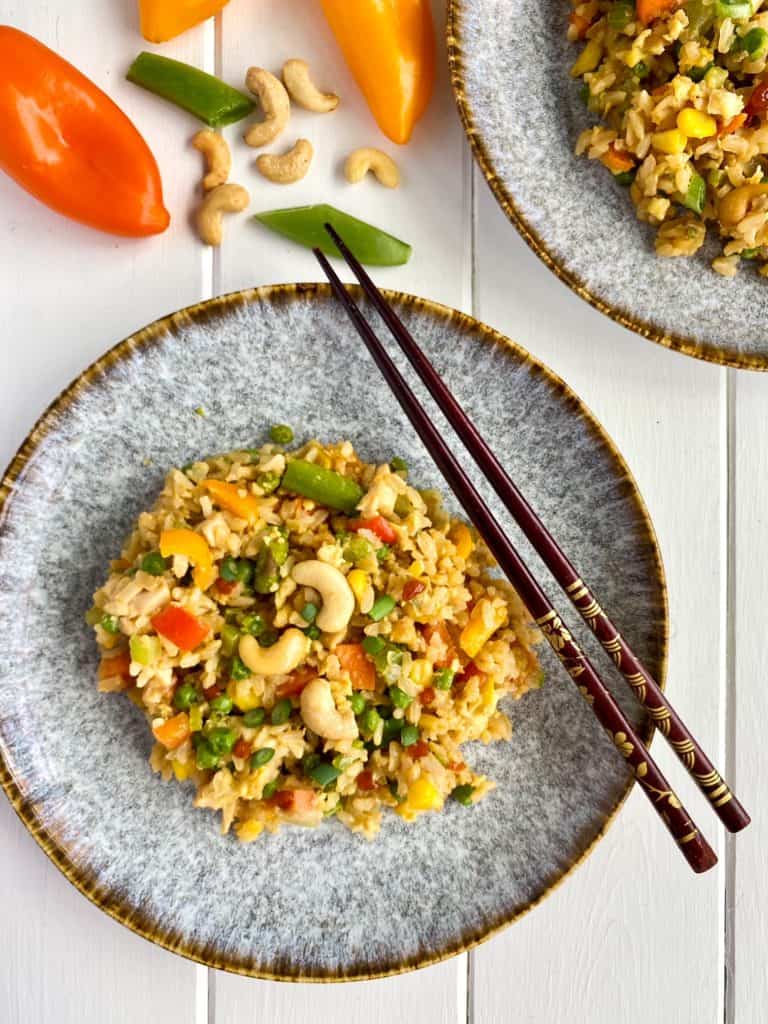

Do I Skip the Yolk?
No, don’t skip the yolk. In fact, many do not know that we receive half the protein AND most of the nutrition in that velvety yellow yolk. We also gain essential nutrients such as choline for the brain and liver health, as well as lutein and zeaxanthin (types of carotenoids) for eye health. Can’t beat that for a completely affordable price too! (See our blog on Cheap, Healthy Meals for only $2/serving meals.)
Don’t skip the yolk – this Mediterranean Flatbread with Poached Egg is packed with nutrients!
4. Store Your Leftovers Properly
Batch-cooking extras can be a powerful healthy-eating strategy for busy people. However, research shows that ~13% of food waste consists of leftovers that go bad. Therefore, it’s key to store those leftovers properly- namely in air-tight containers, at eye-level in the fridge or clearly labeled with best-before dates in the freezer.
Here are Andrea’s Veggie Cheese Egg Casserole leftovers stored for later.
Tips for Storing Leftovers:
- Leftovers last in the fridge for 3 to 4 days. Be sure you can use them in time or consider freezing or sharing extras with friends or family. (Everyone appreciates homemade foods!)
- When meal planning, plan to eat your leftovers for lunches or dinner so they get used/enjoyed.
- Storing leftovers in the freezer adds extra time (approximately 3-4 months) so you can have them for easy lunches or at a later date. However, ensure you label leftovers and know what’s stocked in your freezer (more on this below).
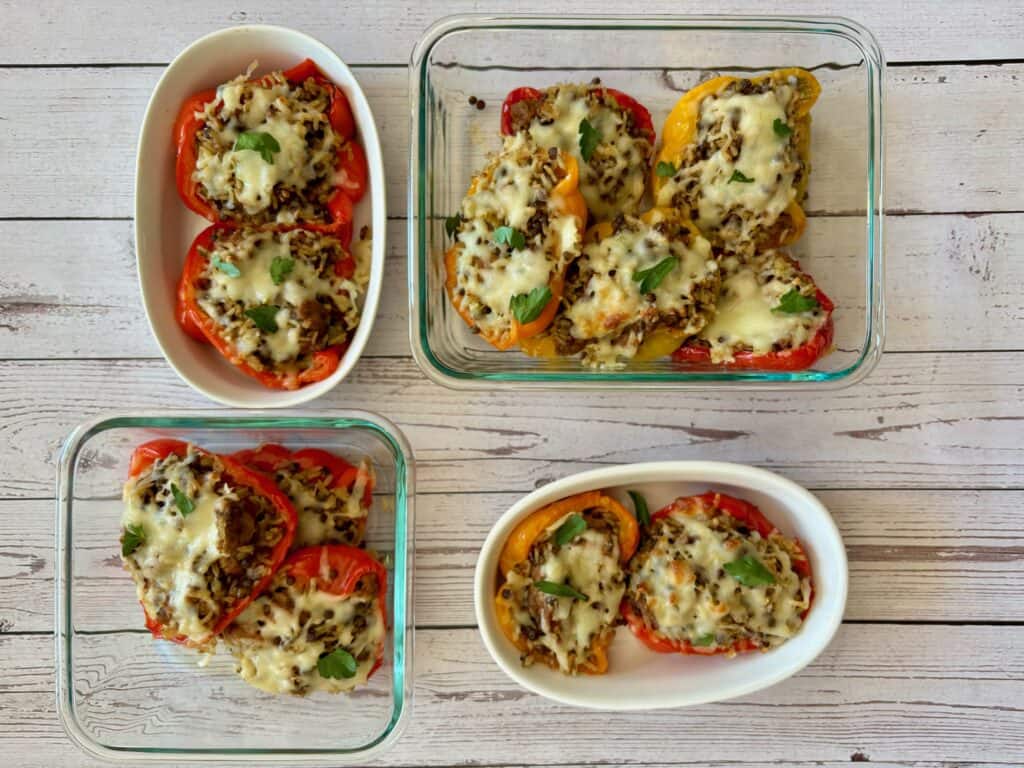
Love Stuffed Peppers leftovers for the freezer and fridge.
DYK: When leftovers (and produce) are hidden in bottom fridge drawers you are more likely to forget about them and have them go bad.
5. Prep Freezer Veggies
Another dietitian strategy for reducing food waste is freezer “veggie prep.” I started doing this before a big trip when I noticed a bunch of fresh veggies that I didn’t have time to use. Consequently, I thought, “Why not chop them and store them in freezer bags?” Not surprisingly, they came in super-handy when I was back from my trip and could make my meals quicker with less labour-intensive chopping. Additionally, my food storing tips were really well-received on my Dietetic Directions Instagram where people were amazed that you can freeze prepped veggies to reduce food waste.
Today, when I’m making a homemade chili, I often benefit by using frozen onions, celery, peppers and carrots that are ready-to-go in freezer bags. Frozen veggies can last for 6 to 8 months, but try to use them up instead of possibly forgetting about them. This leads me to my next food-waste, slashing tip.
Freezer veggies can last for 6 to 8 months, but try to use them up instead of possibly forgetting about them.
6. Do a Freezer and Pantry Inventory
While Spring cleaning, why not complete a freezer and pantry inventory? This way you can write down all those items that you likely forgot about. Additionally, you can wipe down and organize your freezer and pantry before putting the items back. Then you know EXACTLY what you have to use up. As a result, these freezer and/or pantry foods can act as inspiration for your meal planning.
How Does an Inventory Save $$?
Using what we have instead of buying more is a way of saving money on your grocery bill. And just as importantly, applying the FIFO (First In First Out) strategy cuts down on food waste. Keep in mind that if food has been in your freezer for over a year need to be thrown out. However, a more regular freezer inventory (I recommend at least twice a year) and a visible “Inventory Sheet” in the kitchen will help you reduce this preventable food waste.

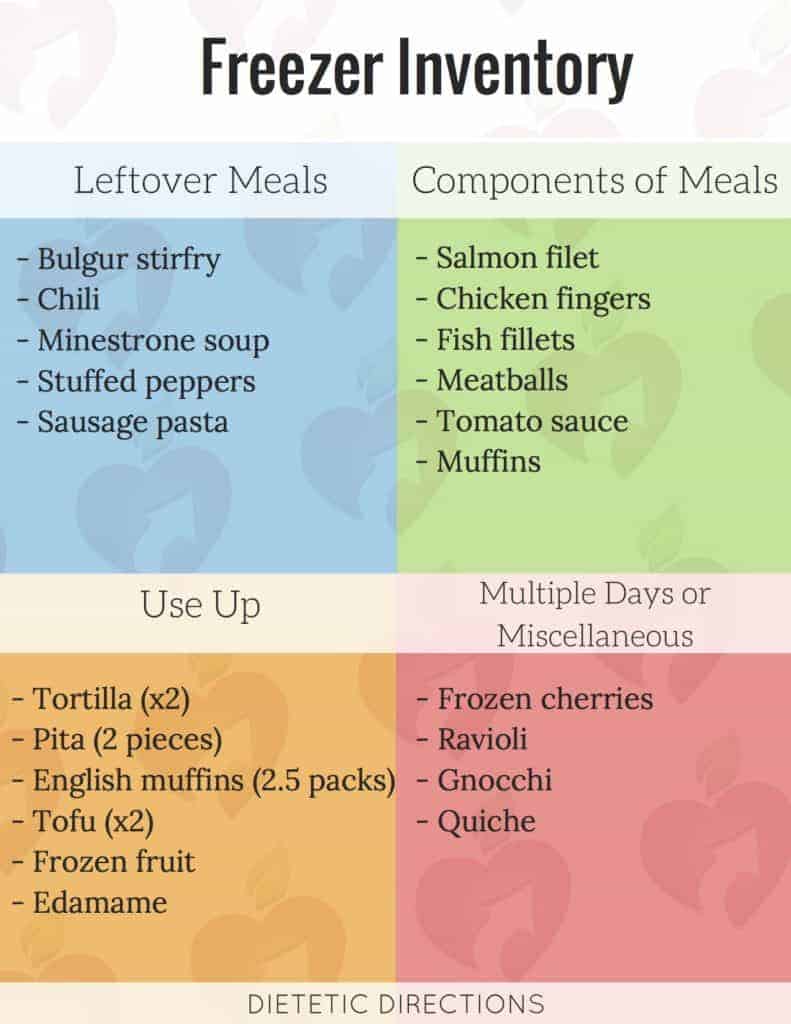
See our blogs on Freezer Inventory and Pantry Inventory blogs for more tips.
Dietitian Tip: Meal Themes simplify dinner decisions. Why not have a “Freezer Night” where you use what’s in your freezer to inspire you?
7. Improve Food Storage to Reduce Food Waste
Finally, food waste due to improper storage is a really easy fix. However, it takes some knowledge and execution. For example, do not wash fresh berries before storing them in your fridge since they will go bad faster. Instead, wash berries or fresh fruits right before using them. Additionally, I always remove my berries from the plastic and store them spread out in a shallow, paper towel-lined bowl so the weight doesn’t cause them to go bad quicker or a spoiled one stays unnoticed in the bunch.
Tips to Store Food Better:
- Avoid overcrowding your fridge – this restricts airflow.
- Research best storage practices for fruits and veggies. For example, store asparagus in water standing up in the fridge. Fresh parsley keeps best standing in water with a plastic bag around the top.
- If buying in bulk, separate large quantities of meat/fish into portions you’ll use. For example, avoid freezing a very large quantity of 30 chicken drumsticks or you’ll be less likely to thaw and use them unless you’re cooking for a party. Instead, portion into smaller freezer bags with 10 to 12 drumsticks, which allows for dinner with leftovers for a family of four.
- Know which veggies are best stored at room temperature– for example, tomatoes, bananas, avocado. Such veggies as garlic, onions, carrots, squash and potatoes are best preserved in a cool dark space.
- Store bread in the freezer instead of fridge or counter so it stays fresh longer.
- Clean your refrigerator regularly to reduce food odors.
DYK: 45% of Canadian food waste consists of fruit and vegetables?
Bottom Line:
Food waste is a preventable household problem that negatively impacts the environment as well as our wallets. Consequently, we hope that you can make some impactful changes such as: meal planning before grocery shopping (can access our FREE Meal Plan Like a PRO resource here); doing a weekly fridge inventory to use up what you have first; planning a “fridge-cleaner” meal to use up existing ingredients; storing your leftovers with care; prepping freezer veggies; doing a bi-annual freezer and pantry inventory; and finally, researching optimal food storage to maximize freshness. These are all sustainable practices that can help prevent wasting and overbuying.

Watch Andrea on CHCH Morning Live discussing how to reduce food waste!
What are your go-to strategies to reduce food waste? Wishing you a Happy Earth Day!


